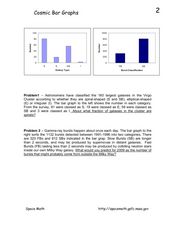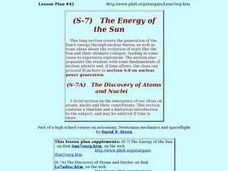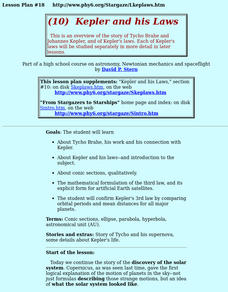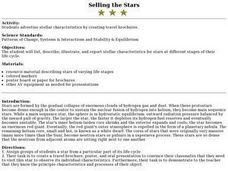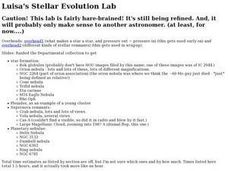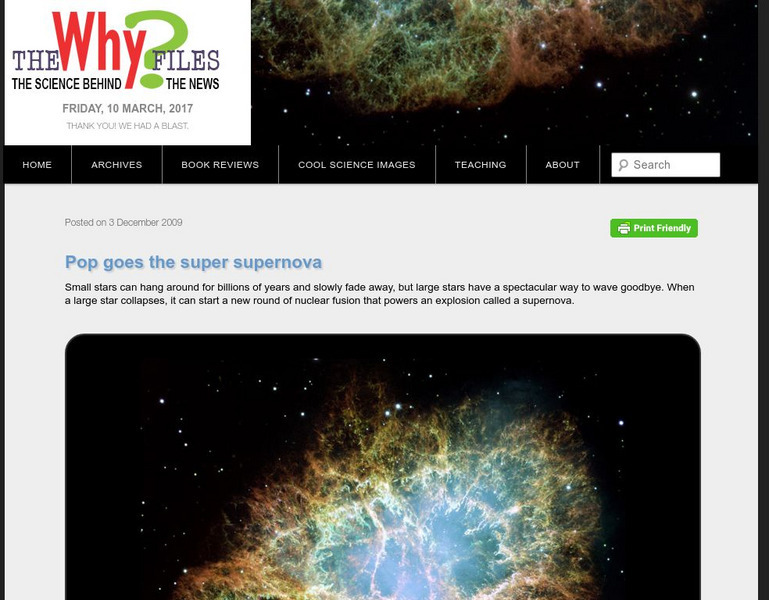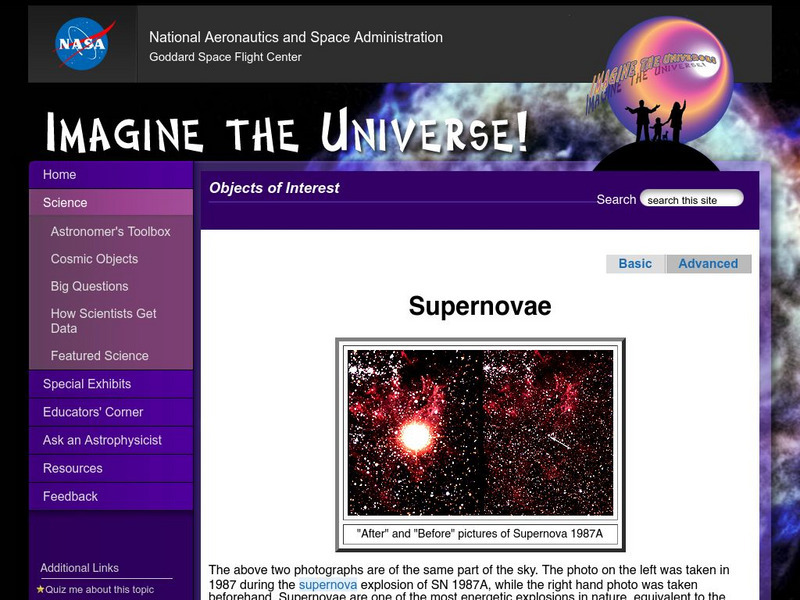Curated OER
Cosmic Bar Graphs
In this cosmic bar graph worksheet, learners solve 2 problems using given bar graphs that plot the number of galaxies vs. the galaxy type and the number of gamma-ray bursts vs. the burst classification. Students find the fraction of...
Curated OER
Earth Science
Students explore the planets and celestial bodies in our solar system. In this outer space lesson, students identify the planets and record journal information about them and other celestial bodies. Students define outer space words.
Curated OER
Primary Energy Sources Pros and Cons
Students explore the different types of renewable and nonrenewable energy sources. In this earth science lesson, students discuss the pros and cons of each type. They conduct a variety of experiments on renewable energy.
Curated OER
The Energy of the Sun
Students study energy generation by the Sun, which involves atoms and nuclei.
Curated OER
Kepler And His Laws
Students engage in an overview of the story of Tycho Brahe and Johannes Kepler, and of Kepler's laws. Each of Kepler's laws be studied separately in more detail in later lessons. They examine Kepler's 3rd law.
Curated OER
Kepler and his Laws
Students examine Kepler's Laws. They confirm Kepler's 3rd law by comparing orbital periods and mean distances for all major planets and study conic sections, qualitatively.
Curated OER
Food Webs
Learners investigate the concept of an ecosystem and how they are interconnected according to a hierarchy. Students are exposed to the "Lion King" as an example of a food chain and this is very relevant. They answer several key...
Curated OER
Selling the Stars
Students create a travel brochure, poster, and presentation to encourage others to visit a star. In this stellar characteristics lesson plan, students research a star type based on its life-cycle. They create a travel campaign to...
Curated OER
Solar System
In this Solar System worksheet, students are quizzed. Students answer questions about the solar system and the planets and other celestial bodies that comprise it.
Curated OER
Luisa's Steller Evolution Lab
Students examine stars and constellations in the night sky. They complete a KWL chart and calculate the mass of stars. They also discuss how a star is formed.
Curated OER
Taking Risks: Drug and Alcohol Abuse
Students discuss a video about drug and alcohol abuse and their connection to risk-taking. They answer questions on a risk factor sheet about the use of tobacco, drugs, and alcohol. They discuss long and short term goals and how not...
Curated OER
Timing An X-ray Pulsar
Students use X-ray data to identify an object as a rotating neutron star, and determine its period of rotation. They use XTE observations of the Crab Pulsar to determine the period of the light intensity, interpret this period as the...
Curated OER
Lives of Stars
Pupils take notes on the lives of stars. In this lesson on stars, students take notes alongside a PowerPoint presentation about the lives of stars.
California Institute of Technology
Ipac at Cal Tech/what Are Supernovae?
Basic characteristics and definition, how astronomers study supernovae, the types of supernovae, where they occur, theories about supernovae, what supernovae tell us about the universe, and the effects of supernovae.
University of Wisconsin
The Why Files: Pop Goes the Super Supernova
Small stars can hang around for billions of years and slowly fade away, but large stars have a spectacular way to wave goodbye. When a large star collapses, it can start a new round of nuclear fusion that powers an explosion called a...
NASA
Nasa: Imagine the Universe: Supernovae Remnants
A brief description of supernova remnants with many embedded links to help define terms used in the description. The specific topics are age and the importance of remnants to us and the types. Definitions of key words are provided.
PBS
Pbs Learning Media: Birth of a Supernova, Type Ia
In this interactive activity from NOVA Online, learn about a type of exploding star - a Type Ia supernova - that is so bright that astronomers can measure the distance to the galaxy in which it resides, and even learn which elements make...
NASA
Astronomy Picture of the Day: Supernova 1987 A
Details of the brightest supernova of modern times - supernova 1987A in the Large Magellanic Cloud. There are many links for additional information.
NASA
Nasa: Imagine the Universe: Supernovae (Advanced)
Supernovae are divided into two basic physical types, including a description of supernova types and how they are classified based on the existence of hydrogen spectral lines. Definitions of key terms are provided.
PBS
Pbs Learning Media: Birth of a Supernova, Type Ii
In this interactive activity from NOVA Online, learn about a type of exploding star a Type II supernova that is so large it has a mass 10 times greater than the mass of our Sun.
Georgia State University
Georgia State University: Hyper Physics: Supernovae
This site from Georgia State Department Astronomy & Physics provides information on the Supernovae. "A supernova is an explosion of a massive supergiant star." Find out much more at this site.
NASA
Nasa: Imagine the Universe: Supernovae (Basic)
A detailed description of a supernova developing from a single massive star. There is a quiz, related links, animation, lesson plans, and an FAQ sheet available also.
PBS
Pbs: Nova Online: Birth of a Supernova
PBS site explores the birth of a Supernova and explores its common types.
TED Talks
Ted: Ted Ed: How to Detect a Supernova
Just now, somewhere in the universe, a star exploded. In fact, a supernova occurs every second or so in the observable universe. Yet, we've never actually been able to watch a supernova in its first violent moments. Is early detection...


